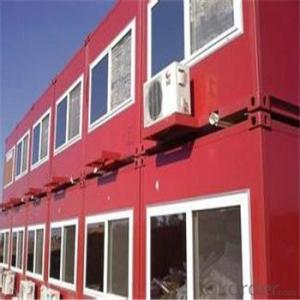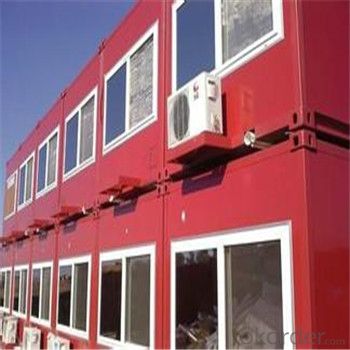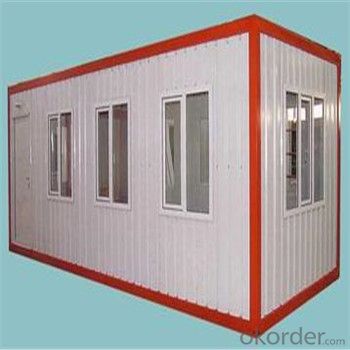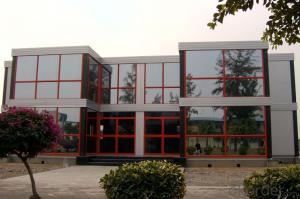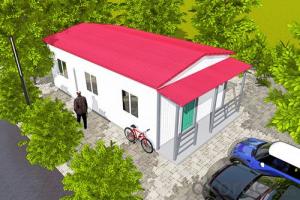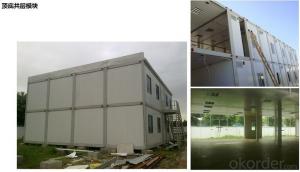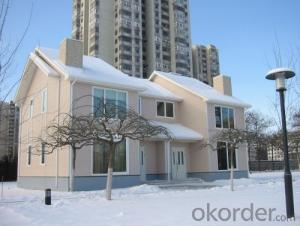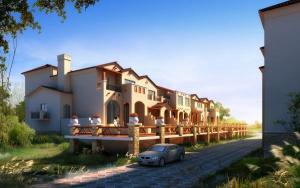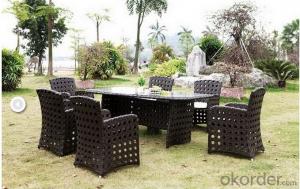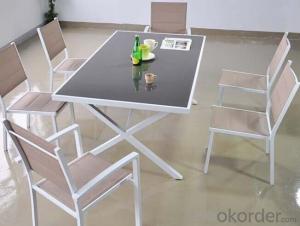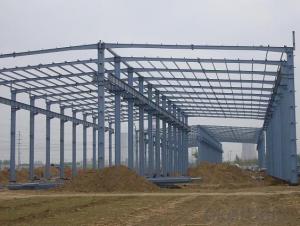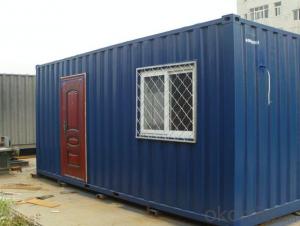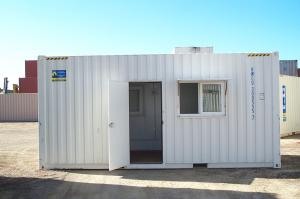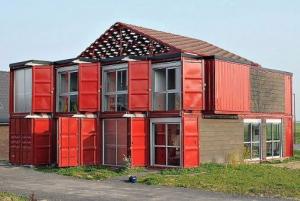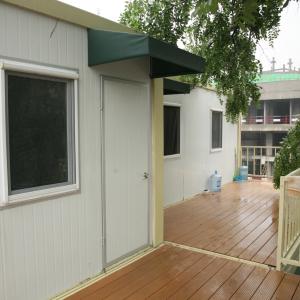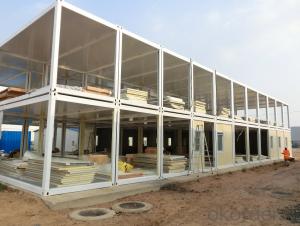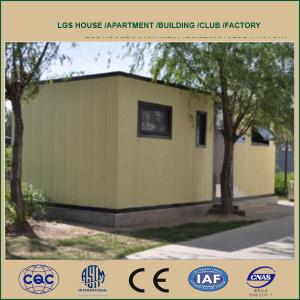Modular Steel House Outdoor Shed For Coffee Bar/Restaurant
- Loading Port:
- Shanghai
- Payment Terms:
- TT OR LC
- Min Order Qty:
- 50 m²
- Supply Capability:
- 1000 m²/month
OKorder Service Pledge
OKorder Financial Service
You Might Also Like
Outdoor Modular Steel House Shed For Coffee Bar/Restaurant
The standard container for various purposes is suitable for international container transport. It is of appropriate external dimensions and has connections for lifting and fixing or compounding. The container is designed as a light construction consisting of floor and roof frames and corner profiles. The construction enables compounding of individual containers in longitudinal and transverse directions without limits. It also enables compounding of containers in 2 floors in height (ground floor + first floor), or in 3 floors in height for warehousing of these containers (ground floor + 2 floor). The small container house is convenient and fact assembling and many
times disassembling, it can be appliced to office, dormitories, shops etc.
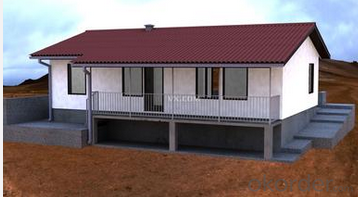
Advantage
Outdoor Modular Steel House Shed For Coffee Bar/Restaurant
container house
♥ Easy to assemble and disassemble: The houses can be assembled and disassembled for dozens of times and can be reused for many times. And the assembling only needs simple tools and doesn’t need power source. The connections of the pieces of the house all adopt plugs or screw connections.
♥ Strong Structure: It adopts steel frame structure, therefore it is stable and in line with the designing code of building structure.
♥ Heat-insulation: The roof and wall are made of color steel sandwich panel (EPS, XPS, PU or Rock Wool) which have good heat-insulating and fire-proof performance.
♥ Environment protection: The design of the house is reasonable and it is easy to assemble and disassemble.
♥ Diversified Specifications: Our design can be customized. The doors, windows, front and back walls can be exchanged each other. And the partition walls according to the customers’ requirements.
FAQ
We have organized several common questions for our clients,may help you sincerely:
①How about your company?
A world class manufacturer & supplier of castings forging in carbon steel and alloy steel,is one of the large-scale professional investment casting production bases in China,consisting of both casting foundry forging and machining factory. Annually more than 8000 tons Precision casting and forging parts are exported to markets in Europe,America and Japan. OEM casting and forging service available according to customer’s requirements.
②How to guarantee the quality of the products?
We have established the international advanced quality management system,every link from raw material to final product we have strict quality test;We resolutely put an end to unqualified products flowing into the market. At the same time, we will provide necessary follow-up service assurance.
③How long can we receive the product after purchase?
In the purchase of product within three working days, We will arrange the factory delivery as soon as possible. The pecific time of receiving is related to the state and position of customers.Commonly 7 to 10 working days can be served.
- Q: Can container houses be designed with a vintage or retro-inspired look?
- Yes, container houses can definitely be designed with a vintage or retro-inspired look. With some creativity and thoughtful design choices, container houses can be transformed into unique and stylish homes that reflect a vintage or retro aesthetic. One way to achieve a vintage or retro-inspired look in a container house is through the use of materials and finishes. For example, incorporating reclaimed wood or distressed metal accents can instantly add a rustic or industrial vibe reminiscent of older times. Vintage-inspired wallpaper or retro-patterned tiles can also be used to create a nostalgic atmosphere. Another important aspect in achieving a vintage or retro look is the choice of furniture and décor. Opting for vintage or thrifted pieces can add character and charm to the space. Vintage-inspired lighting fixtures, curtains, and upholstery can also contribute to the overall retro feel. In terms of color palette, selecting muted or pastel shades that were popular in the past can enhance the vintage or retro look. Earthy tones, such as mustard yellow, olive green, or burnt orange, can evoke a 70s vibe, while pastel colors like mint green or powder blue can create a 50s or 60s aesthetic. Furthermore, architectural details can play a significant role in achieving a vintage or retro-inspired look. Incorporating elements like exposed brick walls, arched doorways, or decorative moldings can add a touch of nostalgia. Additionally, opting for retro-inspired fixtures, such as clawfoot bathtubs or vintage-style faucets, can also contribute to the overall vintage feel. Ultimately, the key to designing container houses with a vintage or retro-inspired look is to carefully select and combine different elements that evoke the desired aesthetic. By considering materials, furniture, colors, and architectural details, container houses can be transformed into unique homes that exude a vintage or retro charm.
- Q: Can container houses be designed with a wrap-around porch?
- Yes, container houses can indeed be designed with a wrap-around porch. The modular nature of container homes allows for flexibility in design, making it possible to incorporate a porch that extends around the entire structure. This addition not only enhances the aesthetic appeal but also provides an outdoor living space, allowing residents to enjoy the surrounding environment.
- Q: Are container houses suitable for artists or creative spaces?
- Container houses are an excellent choice for artists and those seeking creative spaces. These unconventional structures provide several advantages that cater to the needs of artists and creatives. To begin with, container houses are highly adaptable and can easily be converted into creative spaces. The sturdy construction of shipping containers allows for straightforward modifications, such as the addition of windows, doors, or skylights to bring in natural light. Artists can also design open and spacious interiors or divide the space to meet their specific requirements. The modular nature of containers even allows for the combination of multiple units to create larger spaces or unique configurations. Furthermore, container houses are cost-effective, making them a compelling option for artists. The materials used in building container houses are often more affordable than traditional building materials, making them accessible for artists with limited budgets. Additionally, the construction process of container houses is typically faster and more efficient, saving both time and money. Moreover, container houses are environmentally friendly, appealing to artists who prioritize sustainability. By repurposing shipping containers, their environmental impact is reduced, giving them a second chance at life. Artists can also incorporate eco-friendly features such as solar panels or rainwater harvesting systems into their container houses, further reducing their carbon footprint. Lastly, container houses offer a unique aesthetic that can inspire and stimulate creativity. The industrial and minimalist design of containers provides a blank canvas for artists to transform into their own creative haven. The unconventional nature of container houses can also serve as a source of inspiration, fueling artistic expression. In conclusion, container houses are highly suitable for artists and creative spaces. Their customizability, cost-effectiveness, eco-friendliness, and unique aesthetic all contribute to enhancing artistic pursuits and fostering creativity.
- Q: Are container houses susceptible to rust or corrosion?
- Yes, container houses are susceptible to rust and corrosion. Since they are made of steel, exposure to moisture and certain environmental conditions can lead to the development of rust and corrosion over time. Proper maintenance, including regular inspections, cleaning, and application of protective coatings, can help minimize these issues and prolong the lifespan of the container house.
- Q: Are container houses safe and secure?
- When container houses are constructed and maintained properly, they can indeed be safe and secure. Steel shipping containers, which are used in building these houses, are designed to withstand rough handling and extreme weather conditions during transportation. As a result, they are structurally robust and can resist natural disasters like earthquakes and hurricanes. Furthermore, occupants can customize container houses by reinforcing doors, windows, and installing security systems to increase safety and security. These additional measures effectively protect against break-ins and intrusions, ensuring the well-being of residents and their belongings. It is worth noting, however, that the safety and security of a container house depend on factors such as construction quality, adequate insulation, and regular maintenance. To ensure all necessary precautions are taken, it is crucial to hire experienced professionals knowledgeable about container house construction. Additionally, the location of the container house plays a vital role in enhancing its safety and security. Placing it on a stable foundation in a secure area further contributes to its overall safety. Furthermore, installing smoke detectors and fire extinguishers as part of fire safety measures minimizes the risk of fire accidents. In conclusion, container houses can provide a safe and secure living environment for occupants when constructed and maintained properly. By employing appropriate construction techniques, incorporating security features, and conducting regular maintenance, container houses can offer a comfortable and secure place to call home.
- Q: Are container houses suitable for mountainous regions?
- Container houses are a perfect choice for mountainous areas due to their strong structure and long-lasting nature. They can withstand tough weather conditions and heavy snow loads, making them a reliable housing option. This is especially important in regions where traditional construction materials may not be as sturdy. Furthermore, container houses are easily transportable and can be installed in remote locations, which is often the case in mountainous areas. Their modular design allows for effortless assembly and disassembly, making them ideal for places that are hard to reach. Additionally, their compact size makes them suitable for small plots of land commonly found in mountains. Moreover, container houses can be designed to be eco-friendly and energy-efficient. They can be equipped with insulation, solar panels, and other sustainable features, ensuring that they can withstand the challenging climate conditions of mountainous regions. Not only do they provide a comfortable living environment, but they also reduce the ecological impact of residents. In conclusion, container houses are indeed a suitable housing solution for mountainous regions. Their durability, mobility, and adaptability make them an excellent choice for overcoming the unique challenges of living in rugged terrains.
- Q: Are container houses prone to pests or insects?
- Container houses are not inherently more prone to pests or insects compared to traditional houses. However, like any other type of dwelling, container houses may attract pests if proper measures are not taken. Regular maintenance, sealing any openings, and implementing effective pest control strategies can help prevent infestations in container houses, just as it would in any other home.
- Q: Can container houses be designed for small businesses or shops?
- Certainly, container houses are capable of being designed to accommodate small businesses or shops. In reality, container houses have become increasingly popular in recent times due to their adaptability and cost-effectiveness. They can be easily transformed into functional spaces suitable for various purposes, including small businesses and shops. Container houses provide several advantages for small businesses and shops. Firstly, they offer a high level of customization, making it simple to modify them to suit specific business requirements. Containers can be equipped with windows, doors, and partitions to create separate areas for retail, storage, and office space. Moreover, they can be stacked or connected to form larger spaces, allowing for future expansion as the business grows. Furthermore, container houses are relatively affordable when compared to traditional brick-and-mortar structures. This cost-effectiveness is particularly advantageous for small businesses and shops with limited budgets. Containers are readily available, and their modular nature reduces construction time and labor costs. Additionally, they can be transported and relocated, making them suitable for temporary or mobile businesses such as pop-up shops or food stalls. Container houses also offer sustainability benefits, aligning with the growing trend towards eco-friendly businesses. Containers are typically constructed from recycled materials, reducing the environmental impact of construction. Additionally, they can be equipped with energy-efficient features such as insulation, solar panels, and rainwater harvesting systems, minimizing energy consumption and promoting sustainability. In conclusion, container houses can indeed be designed and utilized for small businesses or shops. Their versatility, affordability, and sustainability make them an appealing choice for entrepreneurs seeking flexible and cost-effective spaces to establish their businesses.
- Q: Are container houses prone to condensation or moisture issues?
- Container houses can be prone to condensation and moisture issues, but this largely depends on how they are designed, built, and maintained. Containers are made of steel, which is a highly conductive material that can easily transfer heat and cold. This means that without proper insulation, container houses can experience temperature differences between the inside and outside, leading to condensation. To mitigate condensation and moisture problems, several measures can be taken. Insulation is crucial, as it helps regulate the temperature inside the container and prevents temperature differences that cause condensation. Additionally, proper ventilation is essential to allow moisture to escape and to maintain a balanced humidity level. Another factor to consider is the location of the container house. If it is placed in a humid environment or an area prone to heavy rainfall, moisture issues may be more common. Adequate drainage systems, waterproofing, and regular inspections can help prevent water infiltration and subsequent moisture problems. Furthermore, routine maintenance is vital to address any potential sources of moisture. This includes checking for leaks, repairing damaged insulation, and ensuring that the ventilation system is functioning correctly. Regularly monitoring the humidity levels inside the container can also help identify and address any condensation issues before they become more severe. In summary, while container houses can be prone to condensation and moisture issues, proper insulation, ventilation, location considerations, and maintenance can significantly minimize these problems.
- Q: What is the advantage of a container room?
- here are two kinds of housing box, one is the side of the foam board sandwich board , Is not strong, the service life is relatively short, and not anti-theft
Send your message to us
Modular Steel House Outdoor Shed For Coffee Bar/Restaurant
- Loading Port:
- Shanghai
- Payment Terms:
- TT OR LC
- Min Order Qty:
- 50 m²
- Supply Capability:
- 1000 m²/month
OKorder Service Pledge
OKorder Financial Service
Similar products
Hot products
Hot Searches
Related keywords
